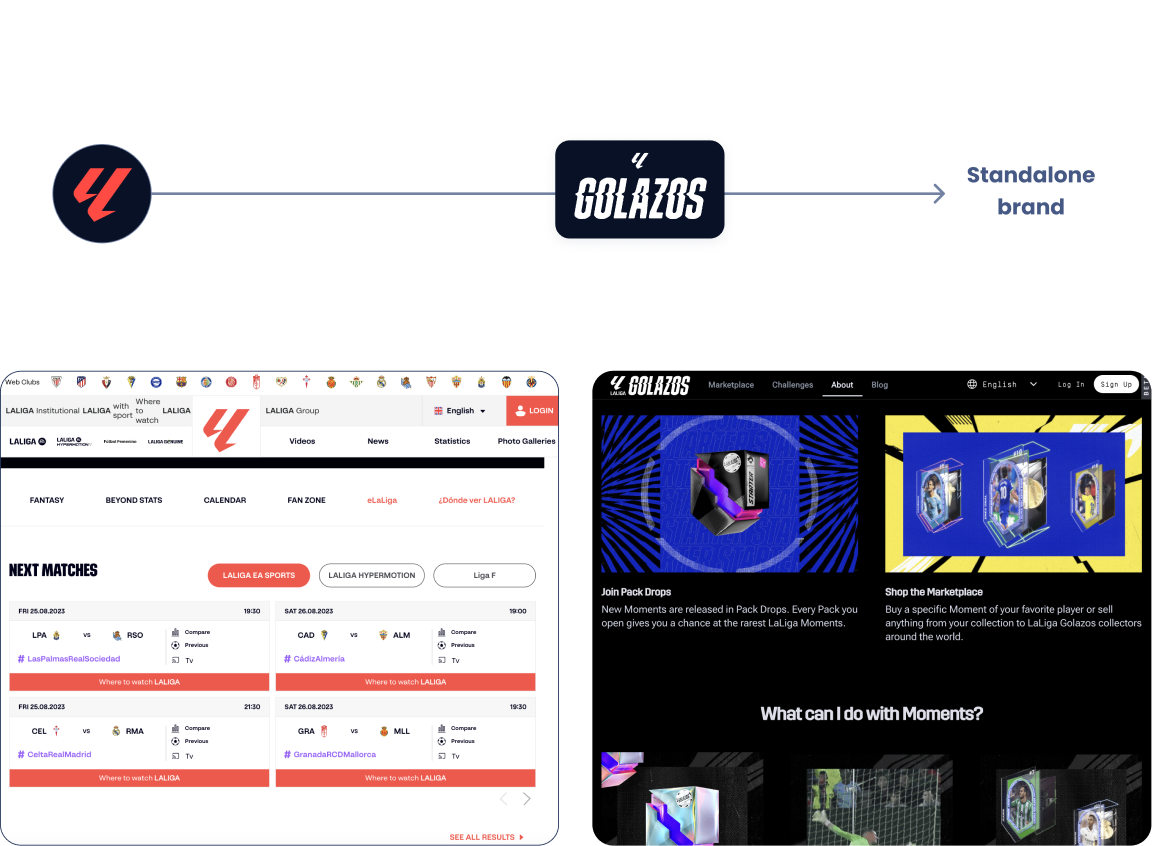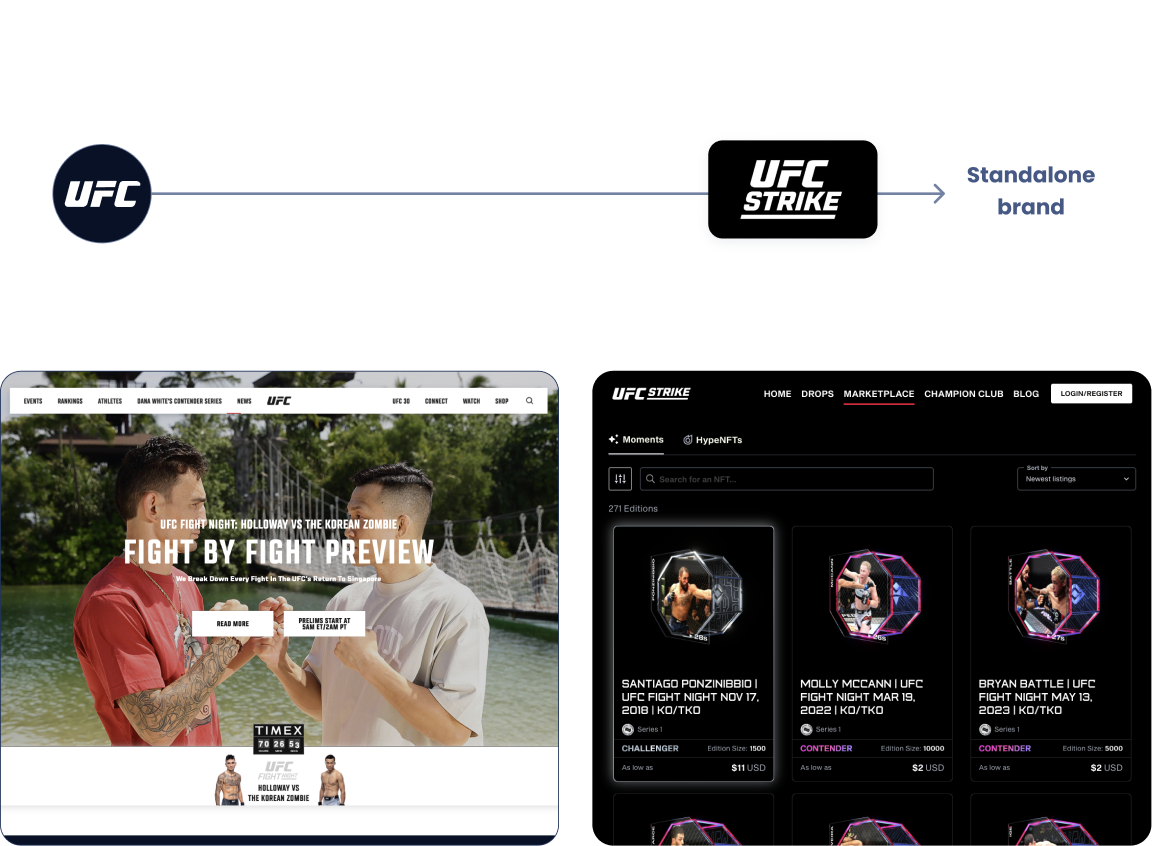The French soccer league tasked us with building an NFT marketplace to immortalize historic moments from some of the most famous athletes in the world.
Ligue 1

Overview
As of 2023, sports leagues had recently delved into the world of NFTs, revolutionizing the way fans engage with their favorite teams and athletes.
These digital tokens enabled sports leagues to offer exclusive, limited-edition content to fans, such as collectible highlights, virtual memorabilia, and even ownership stakes in teams. Having countless extraordinary players and moments in Ligue 1 history as well as a hungry fanbase, the league decided to create an NFT marketplace.
Incentivizing loyalty; gamifying the fan experience.
Introducing Quests, a new ways soccer enthusiasts can engage with their favorite players and teams, encouraging the purchase of multiple products.
An NFT marketplace built by fans, for fans.
We set out to create an NFT platform that appeals to the everyday soccer fan, not just those already invested in the Web3 landscape.
Rewarding engagement and building trust.
We used rewards and personalized products to empower fans to further engage with the brand.
Phase 1: Competitive analysis
I led a competitive analysis, reviewing dozens of NFT marketplaces before conducting an in-depth usability and flow analysis of three key sports-focused competitors. I analyzed the visual identity, identifying a common trend: most position themselves as standalone, tech-heavy products with a distinct web3/crypto aesthetic. These insights informed our approach to differentiation and user experience.
Positioning NBA Topshots, LaLiga Golazos, and UFC Strike
We intentionally moved away from industry best practices to create a more approachable design for football fans. We developed wireframes with a light theme to feel friendly and less 'crypto/techy’.
Phase 2: Information architecture
Because of the enormity of this project, it was important to lock down the information architecture early in the process. I spent many days going back and forth with the client, product team, and other stakeholders to fine-tune the site map.
Given our tight timeline, we designed flexible templates to streamline the design & dev of multiple screens with minimal adjustments.
This site map not only indicated the user’s journey as they navigate through the product, but it provided us a visual roadmap of the work ahead of us.
Phase 3: Wireframing
Our templated approach accelerated wireframing, with two primary layouts: overview and detail pages, which covered most screens except global overlays. Nested structures further streamlined the process, ensuring efficiency.
Overview screens
Details screens
Phase 4: Design system creation
The building of the tokenized design system happened concurrently with the wireframe creation to ensure our components would be ready when prototyping began.
Phase 5: Prototyping
With solid wireframes and a strong design system, we had a flexible framework to build on. This gave us room to experiment with colors and shapes, creating a product that felt distinct from Ligue 1 while still clearly connected.
Overview screens
Detail screens

Phase 6: User testing
Unfortunately, due to contractual challenges and strategic misalignment, the project was halted before user testing, and it was ultimately not launched.



















